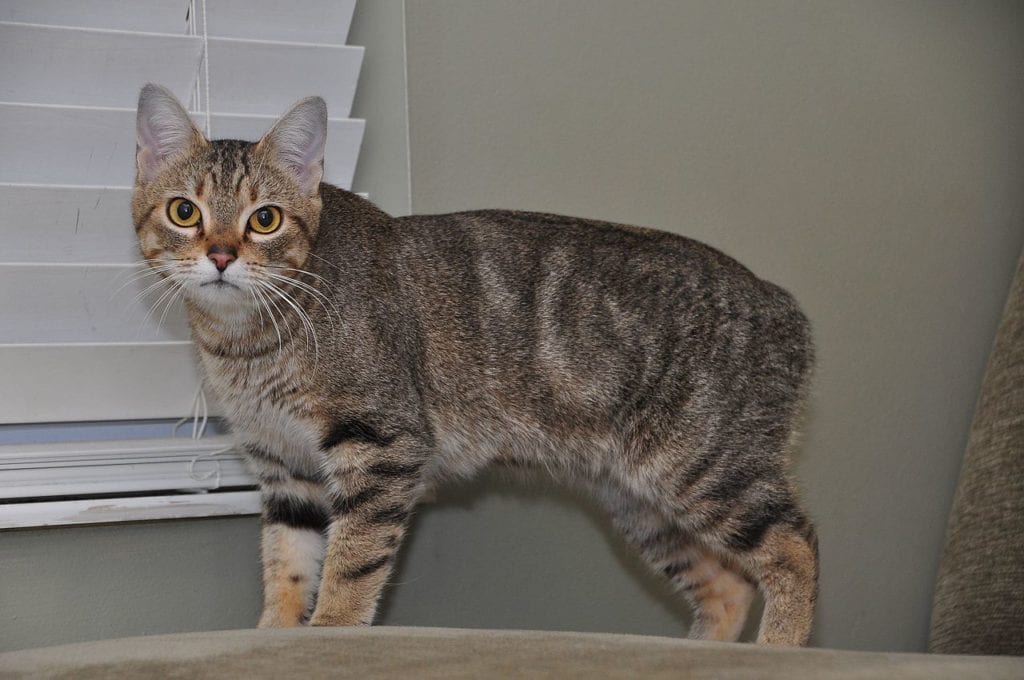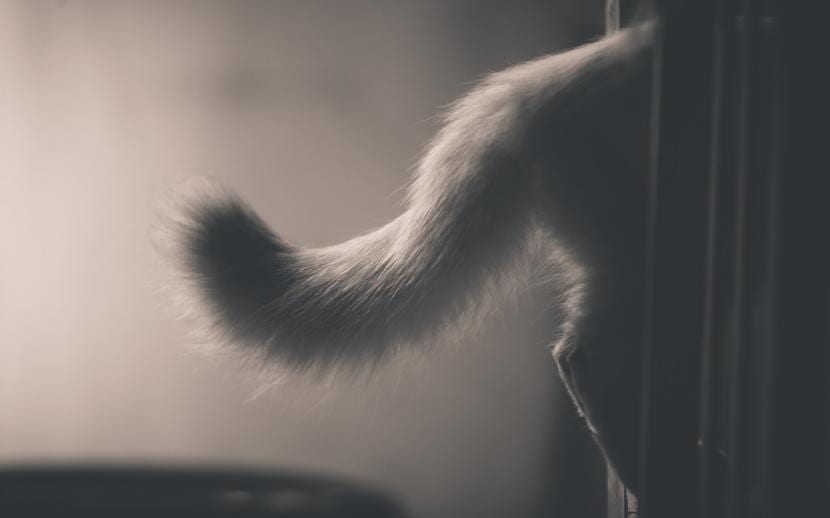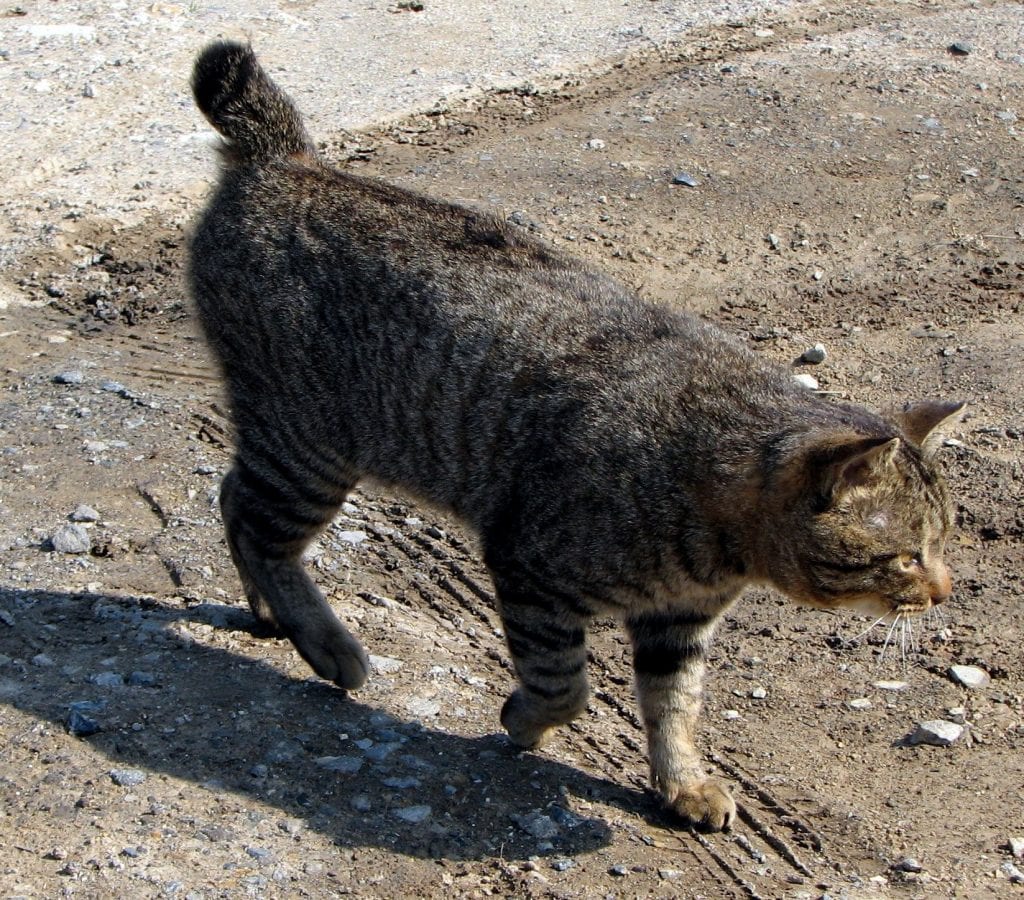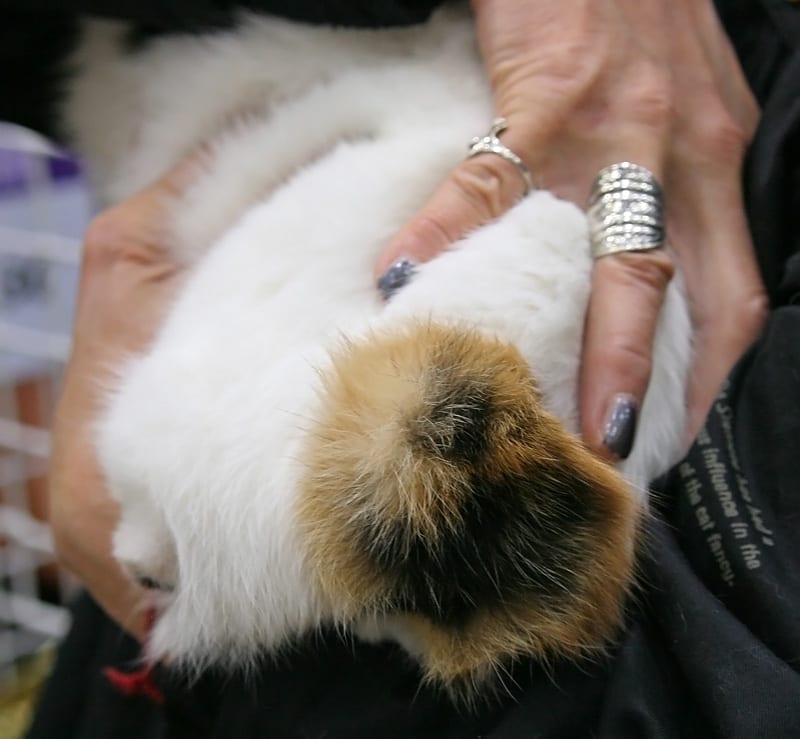
The tail is a very important part of the feline body, since with it they can express how they feel and what their intentions are. For this reason, when we ask ourselves if there is tailless cats In general (there are exceptions) we will not find the answer in the nature of these furry ones, because since their origins they have always used to have it and surely they will continue to have it.
Due above all to selective breeding, mutations have occurred in cats that have caused some of them to be born without a tail or with a very short one. But, why?
What are the characteristics of the tail of cats?

The tail of cats It is usually made up of between 18 and 28 vertebrae, and a length of about 25 centimeters although it can reach 30cm. As we mentioned, it is a very important part of feline communication, because depending on its position and its movement it will indicate one thing or another. For example:
- Tail upright, tip slightly arched: feels good, friendly.
- Tail upright, bristly hair: tense, irritated.
- Tail horizontally, tip slightly arched: interested in something.
- Tail lying on the ground, with the tip up: it is taut.
- Tail down or between the legs, with bristling hair: afraid.
- Tail down, close to the body: he is worried.
- Tail to one side, with arched tip: it is affectionate.
With this in mind, why are there cats without tails?
Cats that do not have a tail, a question of genes

Right. The person responsible for a cat being born without it is a gene, specifically the »T». It has 4 alleles, that is, four versions of the same gene. One of them is very common in the Manx breed; another of the Pixie Bob breed; and it is also suspected that one is the cause of the shortened tail of the American bobtail and another from the Kurilian Bobtail.
Depending on their degree of penetrance, the furry will have a more or less shortened tail. Another curiosity that is also being studied is that naturally born tailless cats have unknown mutations.
However This gene is not only responsible for the length of the tail, but also for other things. For example, in the Manx it is associated with deformities in the central nervous system when it is homozygous. What's more, homozygous puppies often die after birth. Heterozygotes, on the other hand, can be born without a tail or with a partial tail, but they usually have paralysis of the hindquarters.
On the contrary, in various areas, especially Asia and Russia, breedless cats born without a tail have been found whose "T" gene is not associated with any deformity or disease.

And you, have you seen cats without tails? What did you think of this topic?